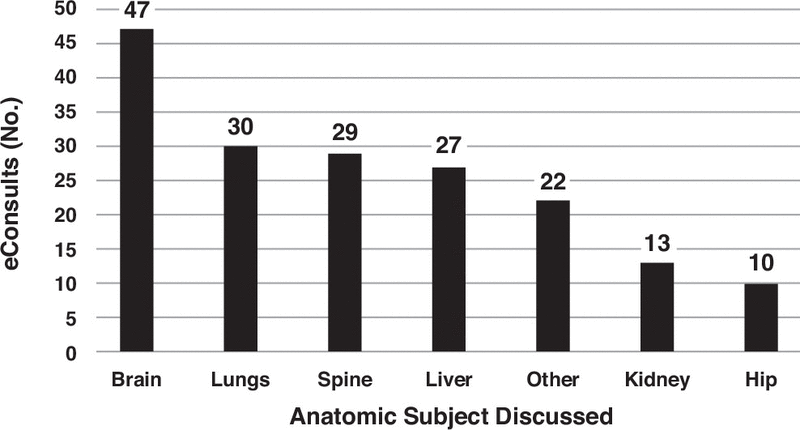Electronic Consultations Can Beneficially Change Patient Care
eConsults between primary care providers and radiologists can not only alter patient management, but they can also lower costs and reduce unnecessary imaging.
Consultations are frequently a critical part of providing the highest level of patient care. Most of the time, though, a face-to-face or phone consultation between a primary care provider and a radiologists is not possible. But, new research shows offering an electronic consultation can be just as effective.
In a study published Aug. 19 in the American Journal of Roentgenology, investigators from the University of Ottawa revealed that not only did e-consults improve patient care, but they also reduced unnecessary imaging and lowered costs.
“The eConsult electronic consultation platform was developed to provide a secure method for primary care providers to ask a specialist patient-specific questions supported by relevant clinical information,” said lead study author Daniel Walker from the University of Ottawa radiology department. “Previous studies have found that giving [primary care providers] increased and easy access to specialist opinions via eConsult reduces unnecessary consultations, decreases wait times, and results in more efficient use of resources.”
The service, he said, can be particularly useful for primary care providers who practice in rural locations and can serve as an educational opportunity for physicians who might have a knowledge gap about certain radiologic procedures or topics.
To test how well eConsult performed and potentially improved care, Walker’s team scoured nearly 21,000 eConsults between PCPs and specialists from September 2012 to January 2017. Of that group, 307 (1.48 percent) involved a primary provider and a radiologist – five were exclude for insufficient information. According to the records, a radiologist completed 108 eConsult requests (36 percent) within 10 minutes.
The team found most questions centered on work-up (112; 37 percent), surveillance (95; 31 percent), and education (48; 16 percent). They also classified the eConsults by sub-specialty requests:
- Abdominal radiology (94; 31 percent)
- Neuroradiology (74; 25 percent)
- Musculoskeletal radiology (61; 20 percent)
- Thoracic radiology (56; 19 percent)
- Pediatric radiology (17; 6 percent)
Walker’s group also sub-classified the eConsults in two ways. First, they focused on anatomic classification, noting most requests pertained to the brain (47; 16 percent), lungs (30; 10 percent), spine (29; 10 percent); and liver (27; 9 percent). Second, they examined the most common conditions PCPs asked about: cystic lesions (38; 13 percent), pain (24; 8 percent), bone lesions (21; 7 percent), and nodules (18; 6 percent).
Bar graph shows breakdown of interactions between primary care physicians and radiologists using eConsult software (Champlain BASE) by most common anatomic subject discussed. Courtesy: American Journal of Roentgenology

These eConsults did more than just provide additional information, however, the team explained. These consultations had a direct impact on patient care in a majority of cases. Looking at their analysis, the team found that PCPs changed their patient management plans in 167 (55 percent) of cases, and unnecessary imaging was avoided in 84 (28 percent) of cases.
“Our results highlight the integral role that radiologist play in advising PCPs on the most appropriate imaging test to perform,” the team said. “We bolster the view that radiologists are useful members of patients’ care teams who offer input that alters patient care in over half of cases.”
Overall, they stressed, PCPs rated their experience as “excellent” in 227 (75 percent) of cases.
But, the number of questions posed during eConsults about nodule surveillance pointed to a need for radiologists to be thorough and clear in their reports, the team added.
“Frequently, diagnostic imaging tests result in new findings for which a recommended follow-up timeline or modality is not provided in the radiologist’s report, leaving this to the judgment of the referring physician,” they said. “Given that a large part of radiologists’ work involves interpreting images and making recommendations on patient care our study suggests that they need to make best-evidence follow-up suggestions a priority.”
The team did note, however, that eConsults are not designed to fit every clinical situation. Given the urgency of time in acute care scenarios, the eConsult program might not be suitable.
New Collaboration Offers Promise of Automating Prior Authorizations in Radiology with AI
March 26th 2025In addition to a variety of tools to promote radiology workflow efficiencies, the integration of the Gravity AI tools into the PowerServer RIS platform may reduce time-consuming prior authorizations to minutes for completion.
The Reading Room Podcast: Emerging Trends in the Radiology Workforce
February 11th 2022Richard Duszak, MD, and Mina Makary, MD, discuss a number of issues, ranging from demographic trends and NPRPs to physician burnout and medical student recruitment, that figure to impact the radiology workforce now and in the near future.
Study Assesses Potential of Seven-Minute AI-Enhanced 3T MRI of the Shoulder
February 20th 2025Researchers found that the use of seven-minute threefold parallel imaging-accelerated deep learning 3T MRI had 89 percent sensitivity for supraspinatus-infraspinatus tendon tears and 93 percent sensitivity for superior labral tears.